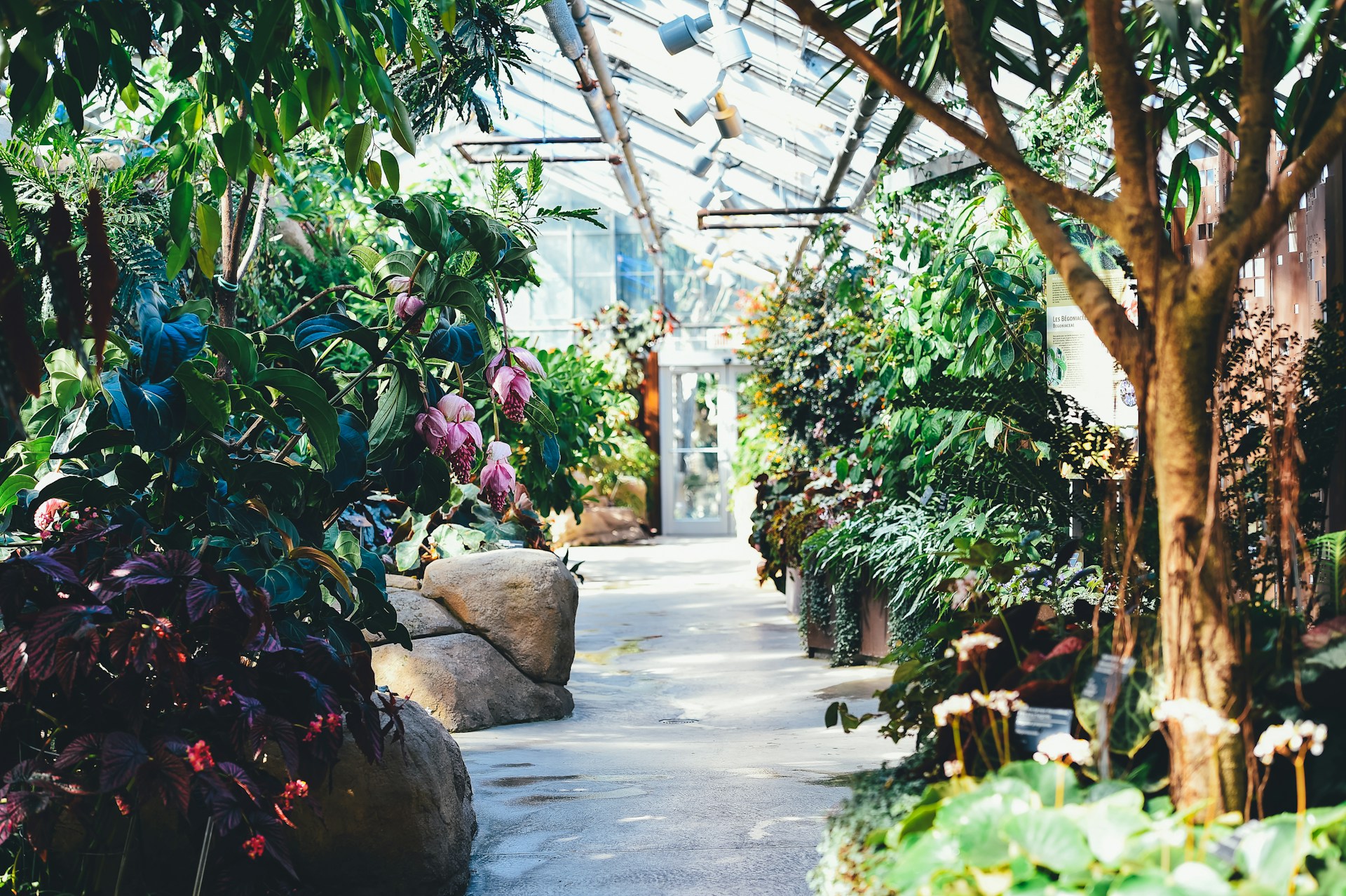Cultivating tropical plants in the chilly UK winter might seem like an uphill battle, but it’s entirely achievable with careful planning and preparation. As temperatures drop, the question on every avid gardener’s mind is: How can I effectively protect my tropical plants from the harsh winter? Your greenhouse is your best ally. It creates a controlled environment, allowing your tropical plants to thrive despite the frosty weather outside. This article will help you understand how to winterize your tropical plants in your greenhouse and keep them flourishing all year round.
1. Understanding Your Greenhouse
Your greenhouse is your tropical plants’ first line of defense against the cold. It’s more than just a structure; it’s your tropical oasis in the middle of winter. To effectively utilize your greenhouse, you first need to understand its capabilities and limitations in terms of temperature regulation, humidity control, and light filtration.
A découvrir également : How to Use Mycorrhizal Fungi to Enhance Root Growth in UK Fruit Trees?
A greenhouse operates by trapping heat from the sun, creating a warm and humid environment suitable for tropical plants. But during the cold, dark winter months, it’s hard for the greenhouse to maintain enough heat, especially at night. Therefore, additional sources of warmth may be required.
Moreover, humidity also plays a crucial role in the health of tropical plants. Greenhouses naturally maintain a higher humidity level, but during winter, you may need to artificially increase the humidity to mimic tropical conditions.
A lire en complément : How to Set Up a Rain Barrel System for Garden Irrigation in Urban UK?
Lastly, light is essential for plant growth. Despite your greenhouse’s transparent structure, the weak winter sunlight may not be enough for some tropical plants. You might need to supplement it with artificial lighting.
2. Protecting Your Plants from Frost
Frost is the most significant threat to your tropical plants during winter. Even inside a greenhouse, the temperature can plummet below freezing on particularly cold nights.
One way to protect your plants from frost is to insulate your greenhouse. You can do this by wrapping the inside of the greenhouse in bubble wrap, which adds an extra layer of warmth and protection. This practice will also help to trap more heat during the day, which is then slowly released at night.
Another method to mitigate frost damage is to ensure that your plants are kept dry. Wet plants can freeze more quickly, leading to frost damage. Avoid watering your plants in the evening when the temperatures are dropping.
3. Heating Your Greenhouse
Adding a source of heat can help maintain a warm environment in your greenhouse during winter. There are multiple ways to heat your greenhouse, including electric heaters, paraffin heaters, and gas heaters.
Electric heaters are the most convenient, but they can be expensive to run, particularly in a larger greenhouse. Paraffin heaters are somewhat cheaper, but they require regular refilling. Gas heaters, on the other hand, can be more cost-effective for heating larger greenhouses, but they need proper ventilation to prevent harmful fumes.
Regardless of the heat source, ensuring even heat distribution is crucial. You can do this by installing fans that will help distribute the warm air evenly throughout the greenhouse.
4. Winter Watering and Feeding
Even though tropical plants need less water during winter, they still need to stay hydrated. However, watering should be done sparingly as too much water can lead to root rot and other diseases.
Water your plants in the morning to allow the water to reach the roots before the colder temperatures hit in the evening. Additionally, refrain from watering the leaves as this can lead to frost damage if the temperatures drop below freezing.
As for feeding, most plants go into a state of dormancy during winter and thus require less nutrition. However, some tropical plants continue to grow, albeit at a slower pace, and might need feeding. Use a slow-release, low-nitrogen fertilizer to provide the necessary nutrients without overfeeding your plants.
5. Choosing the Right Plants and Seeds
Finally, a crucial part of winterizing your greenhouse is choosing the right plants and seeds. Not all tropical plants can survive the UK winter, even in a greenhouse. Research and choose plants that can withstand cooler temperatures.
When purchasing seeds, opt for those that have been pre-chilled, as these are generally more resistant to cold temperatures. Pre-chilled seeds have been exposed to cold temperatures to break dormancy, priming them for growth even in colder conditions. This can make all the difference in how well your tropical plants will fare during the winter months.
Winterizing your tropical plants in a UK greenhouse can be a challenging yet rewarding endeavor. With a little extra care and attention, you can keep your tropical plants lush and healthy throughout the winter.
6. Installing Cold Frames for Additional Protection
In the realm of fine gardening, installing cold frames can be an effective technique for safeguarding your tropical plants against the harsh UK winters. A cold frame functions like a mini-greenhouse, providing an extra layer of insulation that can protect plants from frost and harsh winds.
A cold frame is typically a box-shaped structure with a transparent lid that allows sunlight to penetrate while trapping heat inside. You might think of it as a smaller greenhouse within your larger greenhouse, creating a double-glazed effect. This can be particularly beneficial for tender plants that require more warmth and protection.
To use a cold frame, simply place it over your plants, ensuring it is securely sealed on all sides. During the day, when the sun is shining, you can prop open the lid to allow for ventilation. As evening approaches, close the lid to trap the heat inside. This method provides your tropical plants with a warm, stable environment despite the fluctuating outdoor temperatures.
Remember, not all plants are suitable for cold frames. For example, taller plants or plants that require lots of humidity might not thrive in a cold frame environment. Therefore, it’s important to research and understand the specific needs of your plants before placing them in a cold frame.
7. Keeping Your Plants Healthy and Happy
Winterizing your tropical plants is not just about protecting them from cold temperatures – it’s also about ensuring they have everything they need to stay healthy and happy during the winter months. Just like house plants, your greenhouse plants need to be carefully monitored and cared for to ensure they thrive.
Regularly check your plants for signs of disease or pests. Winter conditions can stress plants, making them more susceptible to problems. If spotted early, most issues can be treated before they become major problems.
Ensure your plants are getting the right amount of light. As mentioned earlier, the winter sun might not be enough for some tropical plants, so consider using artificial lighting if necessary.
Additionally, remember to adjust your watering schedule. Overwatering in winter can lead to root rot and other issues, so water less frequently but thoroughly. Also, ensure that your greenhouse’s humidity levels are high enough to mimic their natural environment.
Lastly, keep your greenhouse clean. Remove fallen leaves, clean used pots and tools, and keep the area tidy. This helps to prevent the spread of diseases and pests and makes for a healthier overall environment for your tropical plants.
Conclusion
Winterizing your tropical plants in a UK greenhouse may pose some challenges, but the rewards are worth the effort. By understanding your greenhouse’s capabilities, protecting your plants from frost, heating your greenhouse appropriately, adjusting your watering and feeding habits, choosing the right plants and seeds, installing cold frames, and keeping your plants healthy, you can ensure they thrive throughout the winter.
Remember, each plant is unique and may require different care. Always do your research and adapt your techniques to the specific needs of your plants. With some dedication, patience, and a little help from these best practices, you can enjoy a lush, green oasis in your greenhouse all year round, defying the cold UK winter outside.
In the end, the image credit goes to all the passionate gardeners who put their heart and soul into their tropical greenhouses, turning them into a testament of their love and respect for nature’s marvels, all in their own backyards. Their dedication is an inspiration to all and serves as a constant reminder that with the right knowledge and a little effort, anyone can create their tropical paradise, right here in the UK.










